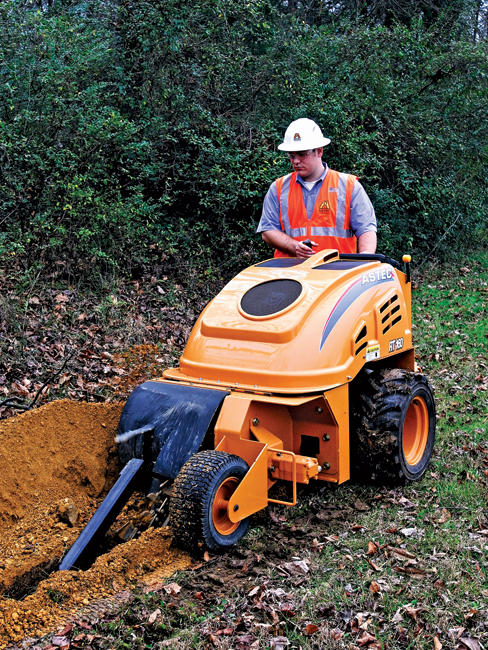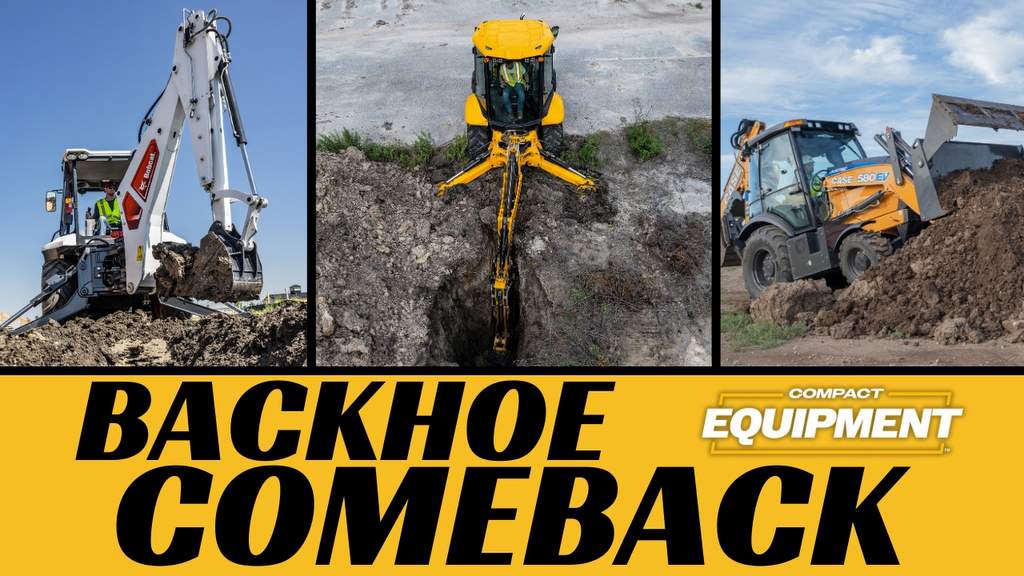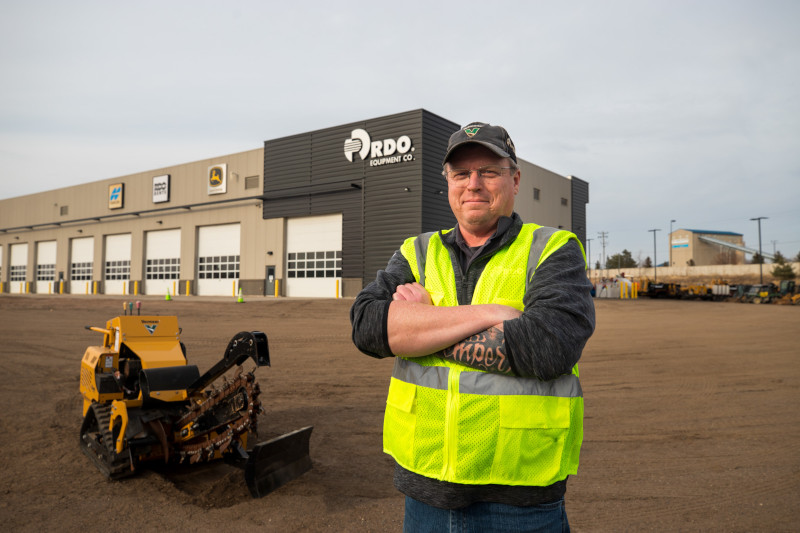Cutting Through the Clutter

Trenchers were the driving force that initiated the underground construction boom that began more than 40 years ago, and in the years since then, trenchers have buried much of the world’s utility infrastructure. The development of several effective trenchless technologies permits pipe and cable to be placed underground with minimal excavation, yet trenchers continue to be responsible for much of today’s underground utility construction workload.

Trenchless procedures are best suited for jobs where surface improvements, existing underground utilities and restoration costs make excavation impractical or impossible. Because many utility construction projects continue to be in open country where these factors are not issues, trenching often is the most efficient and cost-effective method of installing underground cable and pipe.
Choosing the right trencher — or the best combination of trencher models for an equipment fleet — involves several important considerations. Equipment buyers should consider several factors in order to select trenchers best suited to their needs:
How Will the Machine Be Used?
What kinds of installations will the trencher be expected to make? The sizes of product to be placed in the ground determines how deep and how wide the trench needs to be. What kinds of soils will the machine work in? Equipping a trencher with the digging assembly, chain and teeth best suited for soil conditions in which it will be working will enhance productivity and eliminate unnecessary wear of digging components and stress on the machine. Will the trencher be used every day or occasionally? Is production speed important? Will the machine only be used to dig trench, or should attachments be considered? Which model is best? How much is all of this going to cost?
Carefully analyzing how equipment will be used enables realistic decisions about model selection. Compact, pedestrian machines are the least expensive and are adequate for many jobs. Small- and medium-size riding models handle larger jobs, and some models can be equipped with attachments to expand their capabilities. Powerful, multipurpose machines with a wide assortment of available attachments can be equipped to do a wide range of utility work. Big trenchers and plows have the capability of installing cross-country installations of cable, pipe and duct and conduit in diameters to 24 in.
Many models offer a variety of options. Most compact trenchers have air-cooled gasoline engines. Riders often are available with either gasoline or diesel power. Turbocharged engines can boost production capabilities. Large machines are equipped with liquid-cooled diesel engines. All models can be equipped with teeth and chain suited to specific digging conditions. A variety of trenching component options are available for larger models, including center-line and multi-position digging assemblies, disk trenchers for cutting through paved surfaces and frozen ground and teeth and chain combinations for cutting through rock and other difficult conditions.
Mechanical or Hydrostatic Drive?
Equipment buyers have a choice between machines with mechanical and hydrostatic trenching drive systems. Some trencher owners consider mechanical drive systems the most productive and believe that hydraulic drives are easier to maintain. Mechanical trenching drives generally transmit a greater percentage of engine horsepower to the digging component, but mechanical systems require belt and chain adjustments and lubrication, and the operator must use a clutch and shift lever to change digging chain speeds.
Hydrostatic machines are easier to operate; the operator can adjust digging speeds without shifting gears, and hydrostatic models require less regular maintenance. Improvements to both types of systems have narrowed performance differences; both are efficient and productive. The choice of which to use has become largely a matter of personal preference.
Are Attachments Needed?
Trenching is the only function of pedestrian models. Riding models usually come with a standard backfill blade, but most riding machines today are designed to accommodate a variety of attachments that convert a basic trencher into a multipurpose underground construction machine. A utility backhoe is one of the most popular trencher attachments. Others are the vibratory plow, combo (combination vibratory plow and offset trencher) and hydraulic boring attachment. Medium-range models can be equipped with attachments to do as many as six different underground jobs. Equipping a trencher with one or more attachments often can eliminate the need to bring another piece of equipment to a job. A careful analysis of how a machine is to be used will help buyers decide whether the extended capabilities offered by attachments will justify the added investment costs.
Is It Easy to Operate?
The easier a trencher is to use, the more efficient and productive its operator can be. Machine functions should be easy to understand, controls clearly identified and arranged for easy, natural operation. Even on compact pedestrian models, trenching components are raised and lowered hydraulically, and attachments also are operated off the machine’s hydraulic system.
Comfort is not a feature customarily associated with construction equipment, but ergonomic design considerations can make a long work day less tiring and stressful. For example, the operator station of the Ditch Witch RT family of tractors makes effective use of available space to provide as much leg room as possible. The padded seat can be adjusted for height, slides forward and backward, rotates 90 degrees and has adjustable arm rests. A tilting column permits the steering wheel to be adjusted to individual operator preferences.
Is It Easy to Maintain?
The easier a machine is to maintain, the less likely regular service will be neglected. Wear parts must be replaced and regular maintenance and occasional repairs are necessary to keep machines in top running condition. Look for equipment with extended maintenance periods, fewer daily maintenance points and convenient access to service points — all features that make a trencher simpler to maintain and repair.
What About Product Support?
Surveys document that many owners and operators of construction equipment consider product support to be just as important as the quality of the equipment they purchase. Product support begins with ready access to replacement parts and availability of professional service when repairs are necessary. Terms of a machine’s warranty are an extremely important consideration. What does it include? How long does coverage last? The best product support programs don’t end with parts and service and a good warranty. One of the most valuable benefits of owning and operating equipment should be the service and support available from the dealer organization. With large inventories of parts, dealer personnel should support their customers in every way necessary to help keep equipment on the job. It doesn’t much matter how good equipment is if it is impossible to get parts in a timely manner or training in its operation isn’t readily available.
Matt Collins is the compact equipment product manager with Ditch Witch, based in Perry, Okla.
Rent to Trench
Finding a Good Walk-Behind Trencher Rental for a Few Cut-and-Cover Projects
When it comes to walk-behind, pedestrian trenchers, customers can expect to pay about $150 to rent a unit for a day, $550 for a week and $1,300 for a month. Most customers tend to rent for 24 hours or less. If you rent for longer periods, you will likely be asked to perform some minor maintenance such as checking the oil and grease bearings. Do those simple tasks and that will help you avoid downtime and ensure that you return the equipment in good working order.
Like most rented construction equipment, walk-behinds typically have a time limit on daily operation, a restriction designed to limit wear and tear on the machine. For example, many pedestrian trenchers have a limit of eight hours of running time for every 24 hours the trencher is kept. If customers go over the eight hours allowed on the hour meter, there will be an additional charge.
Good renters will be there to explain all of this, providing good service with a quality machine. This good service includes training. Most experienced contractors need little training, if any, to operate a walk-behind, but many walk-behind trenchers are designed with the occasional user in mind, so they’re equipped with simple, intuitive controls. Electricians and plumbers, for the most part, can get by with brief training, but do-it-yourself customers need much more instruction, and a renter should be more than happy to give them all of the training they need until they feel comfortable.
Good service also includes good advice, which every rental customer should seek if he is the least bit hesitant about operating the walk-behind. Like before that digging chain touches the ground, call the national 811 number and/or the local Call-Before-You-Dig hotline. It’s also a great place to try new equipment, perhaps a vibratory plow or a larger trencher that would be a better choice for their application.






Comments are closed here.